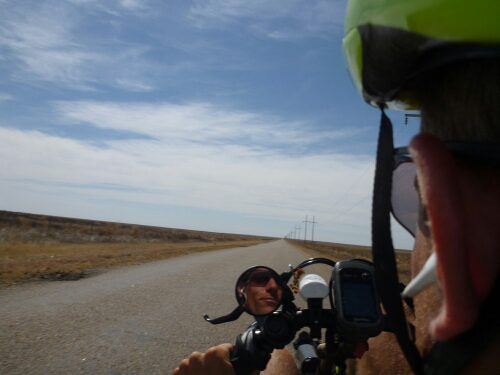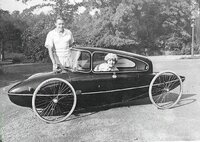Woher weisst Du das? Messen kann mans nicht es sei denn es gäbe Mikrophone die in einen Gehörgang passen. Und fühlen kann man absolute Werte nicht.
My German is not good enough to be a smart-ass, so let's switch to English

If microphones don't fit in your earcanal, then how did we find out at what volume hearing damage occurs in the first place?
I do have some experience in sound engineering, as an artist and as a DJ: Worlds that are difficult to combine, since you need perfect hearing for the first, but for the latter you need to be able to work for hours on end in very loud environments. I still have moulded earplugs from this period in my life, sadly they don't work well when I'm cycling (I have the impression my inner ear somehow deforms when I'm sporting, and then there's the crapload of sweat).
What I also know is that actually making an estimate of pressure by only using your ears is simply impossible. Humans reference sounds based on experience, and try to estimate the volume based on this. A good number of years ago, a friend of mine got carte blanche to set up a sound system for a club: Sound engineers dream come true

He went on to basically set up a Funktion-One system that was overpowered by a decent margin, for two reasons:
- lack of distortion;
- no need to employ a highpass-filter (which is usual in clubs, because everything < 50 Hz is the biggest load on amps and subwoofers, while not adding thát much to the experience);
Both reasons turned out to be bad decisions. The lack of filtering caused other parts of the building and even the next building to resonate, which was simply fixed by adding filters anyway. The lack of distortion however caused another effect: People were constantly complaining the music was "too soft"

Don't tell anyone - we've even tried playing quite a bit past legal limits and it still didn't "feel" loud.
What I learned back then: An important part of our "this is a loud houseparty"-feeling comes from the imperfections of PA near it's limits.
The data I do have about volume in a bike comes from three sources (in chronological order);
a) I've been on a motorcycle a number of times. It's an issue there (even though you wear a helmet on them), so I kind of knew about it;
b) Wim Schermer told me. I thought he was simply being his commercial self at first, because eventually I bought one of his racecaps;
c) I wanted to verify, so I went for a ride in the Quest with my sound level meter (class 2) taped to my helmet (it's a simply one which I used to use in clubs etc., but it's fairly accurate). I don't remember the exact readings, but I do remember thinking "I can ride safely for one hour and that's it". Mind you, back then I was quite a bit slower in my Quest than I am now in the QV - where 40 km/h used to be my holy grail on the straights, now it's 50 km/h.
I had the impression the sound pressure is actually a bit worse in the Quest, compared what I read about motorcycles.
I'm definitely not an aero-engineer so speculating here, but maybe this can be explained by the aerodynamics: The speed of the air over the bike might be faster than on a motorcycle (since the terrible aerodynamics of a motorcycle will probably slow down and compress the air before it gets to your head)?
I'm also willing to redo this measurement, my only issue is that the QV has the long hood (with integrated racecap), so I either need to measure on the wrong spot or behind the visor, which makes quite a bit of difference. Might also be able to borrow a Quest Carbon and a DF to compare. Actually quite interesting which VM is the most silent!
Viele bedeutsamen Geräusche aus dem VM (Schaltungsprobleme, Klopfgeräusche ...) treten dann deutlicher hervor, da sie alle einen tiefen Frequenzanteil haben.
It's not a perfect comparison since my cameras (front+back) are in very different spots than my ears and the lack of filtering also causes an inaccurate measurement, but I just checked the sound spectrum on some footage from my rides and it's all quite similar:

This particular picture is from the front cam, at 52 km/h. The spike at 230-240 Hz is actually me pedaling - Not only can I hear it, but it's possible to measure cadence from the audio, which is kind of funny. What I also noticed: switching on the mountain drive actually introduces some high frequency noise that I never noticed while riding. Time to do the periodical hearing test again

aber gesundheitsschädliche Lautstärken werden über den frequenzabhängigen Wert in db (A) gemessen und nicht in db,
Seems I missed this one a little while ago. dB(A) is being used as a standard to limit sound pressure, for example while at work, but this has more than a simple physiological reason; being continuously exposed to a certain sound pressure can also have a psychological effect.
I'm not sure whether direct hearing damage is in line with the frequency "filter" for dB(A); did read a (scientific) article a while ago which concluded that low frequencies are more dangerous than we always thought. Which would result in my earplugs being far less effective than I always thought; loud low frequencies in clubs enter your ears directly through your head, instead of taking that tube designed for hearing (so everything sounds really bass-heavy when wearing plugs). Another reason for a visit to the hearing care professional for a check-up

Last things last: Excuse me for being passionate about this subject. As much as I love loud music, I love music. I would really have a hard time choosing between losing my sight and losing my hearing: For me, sight = function, but hearing = emotion.



